$500, $1,000, $100,000: Big bills of a bygone era
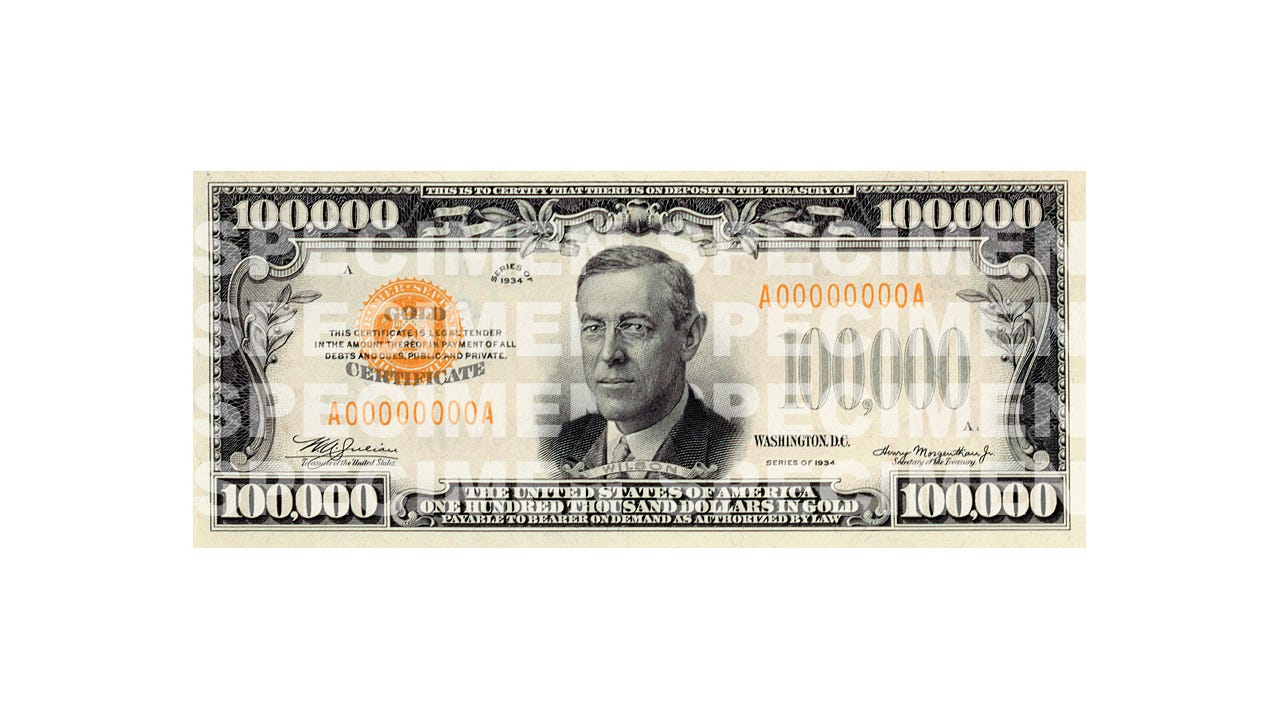
The Bankrate promise
At Bankrate we strive to help you make smarter financial decisions. While we adhere to strict , this post may contain references to products from our partners. Here's an explanation for .
Key takeaways
- “Big bills” used to go beyond the $100 bill — going all the way up to $100,000.
- Most very large bills are out of circulation.
- Collectors estimate different values for these bills, but it could be in the thousands of dollars.
Most of us hope for big balances in our checking and savings accounts, but when you withdraw funds, the biggest bill you’ll see today is probably $100.
Once upon a time, though, $500, $1,000, $5,000, $10,000 and $100,000 bills were in circulation. After the last printing of those denominations in 1945, the Treasury Department and the Federal Reserve discontinued them in 1969.
The use of large bills in the 21st Century has decreased dramatically, and they’ve been greater targets for counterfeits versus smaller denominations. They’re still legitimate legal tender but are in limited circulation, except for the $100,000 bill, which was only ever used in fiscal channels.
These days, most of these increasingly rare bills are owned by collectors. In fact, if you happen to have a mint-condition bill in a rare denomination, it could mean a big payoff. According to Old Money Prices, a paper currency collector, a $1,000 bill printed in 1928 with a gold seal could be worth over $20,000, if in uncirculated condition.
Here are some rare bills you might want to keep an eye out for.
$500 Bill
Not all bills had presidents on the front. One limited $500 has a Chief Justice while another features the 25th President of the United States.
$500 Series 1918 Blue Seal
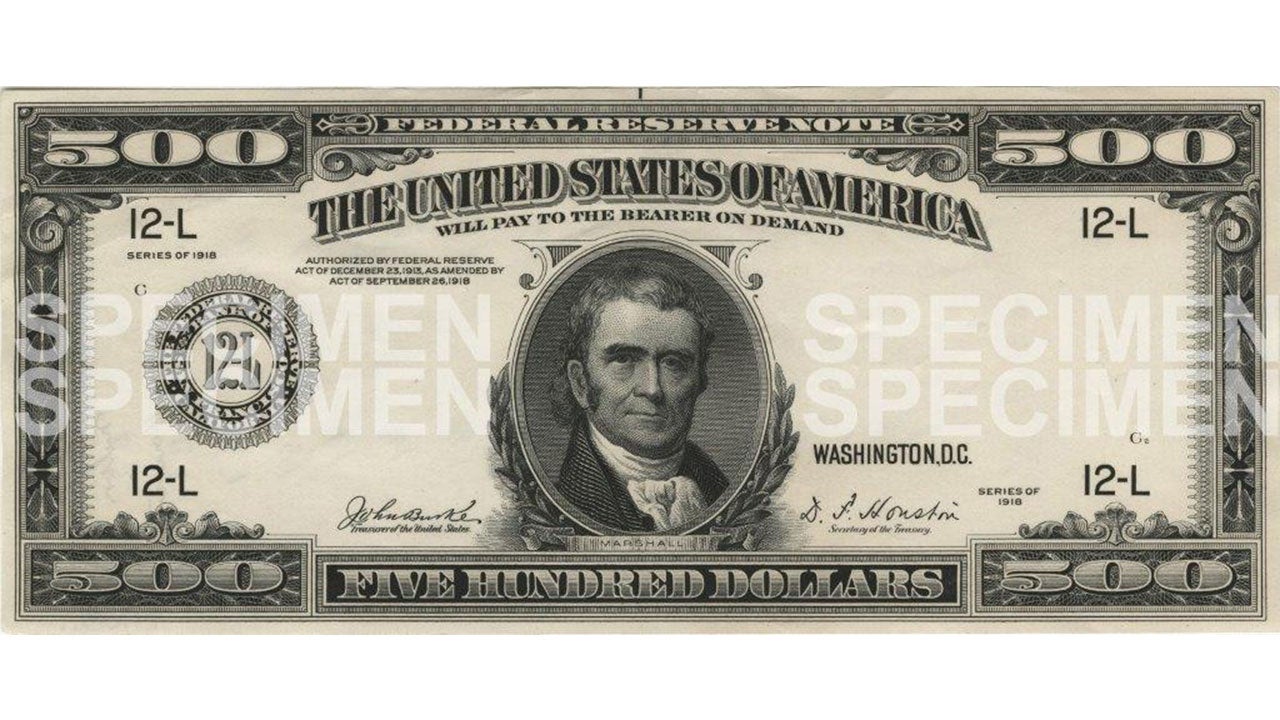
Produced in 1918, this $500 bill bears the likeness of John Marshall on the front, who served as the United States’ fourth Chief Justice of the Supreme Court from 1801 to 1835. The reverse side of the bill depicts Spanish conquistador Hernando De Soto discovering the Mississippi in 1541.
$500 Series 1928 & 1934 Green Seal
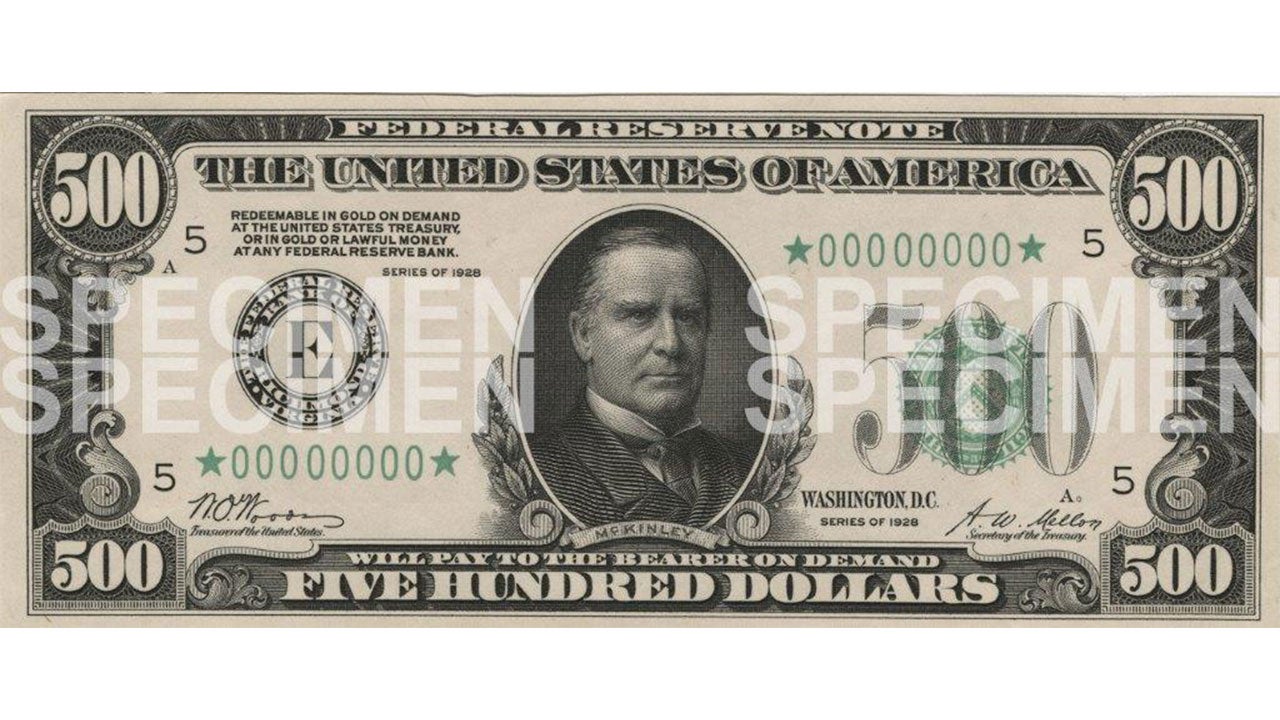
These green seal notes ($500 bills with the green seal are often called Federal Reserve notes) bear the portrait of William McKinley, the 25th President of the United States. He served a full term and then only six months of his second term before being assassinated.
$1,000 Bill
Before Alexander Hamilton’s current spot on the $10, he was featured on a $1,000. Hamilton, like John Marshall, was on a bill even though he wasn’t a president.
$1,000 Series 1918 Blue Seal
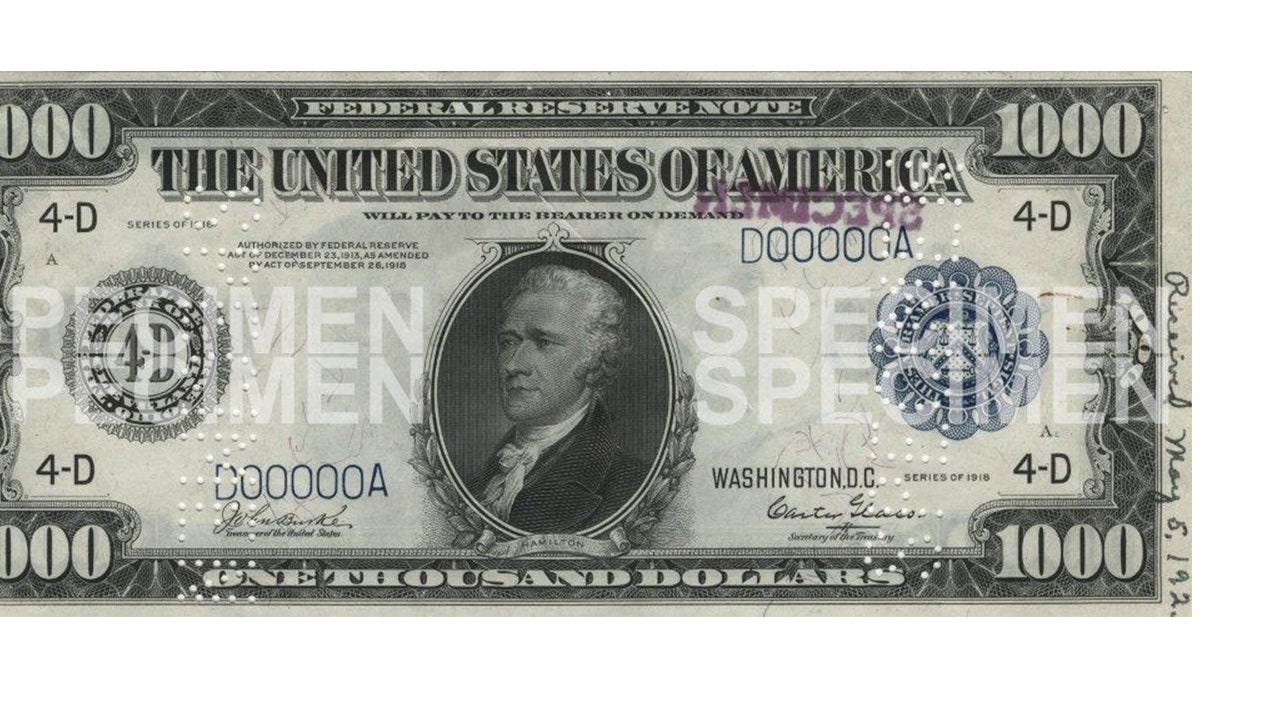
This bill, printed in 1918, has Founding Father Alexander Hamilton’s face on the front and a soaring eagle on the back. It’s fitting that Hamilton found his way onto some U.S. currency, since, among his other accomplishments, he’s credited with founding the country’s financial system.
$1,000 Series 1928 Green Seal
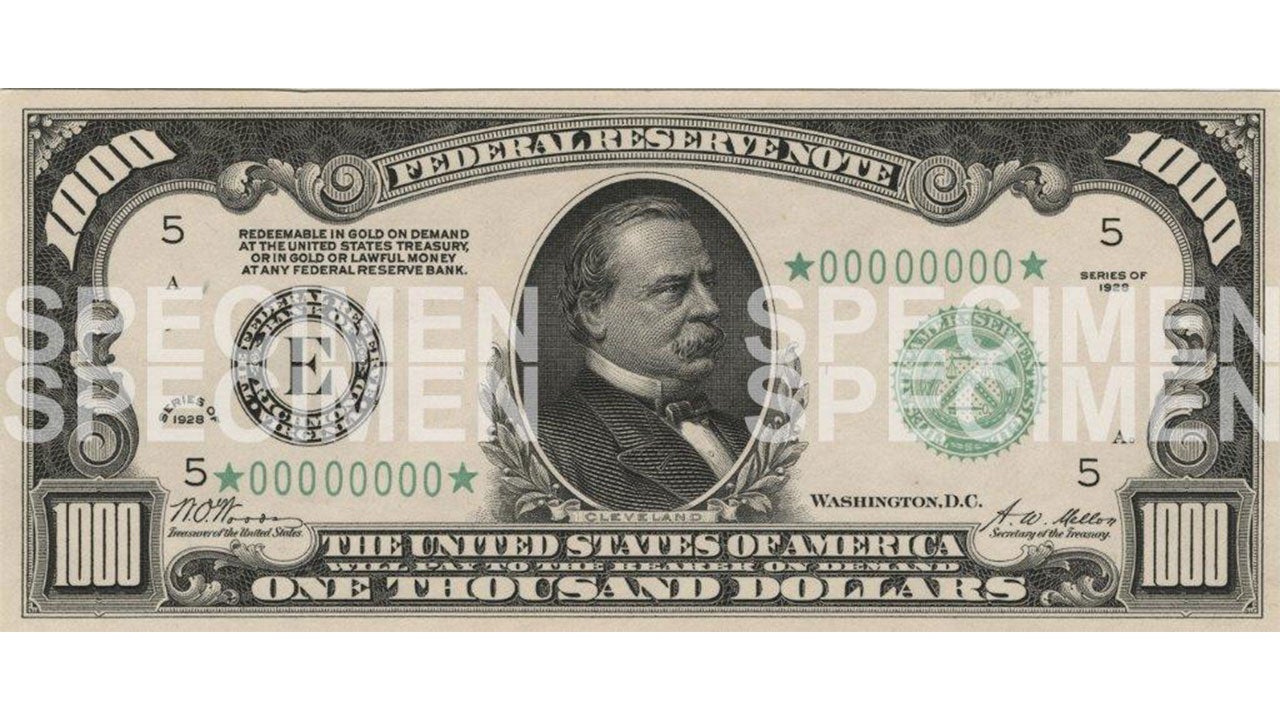
Printed in 1928, this $1,000 bill features two-time United States President Grover Cleveland. He was the nation’s 22nd and 24th president, earning him the distinction of being the only president to serve two non-consecutive terms.
$5,000 Bill
It’s been more than 100 years since this $5,000 bill was released but features a Founding Father we no longer see on our bills.
$5,000 Series 1918 Blue Seal
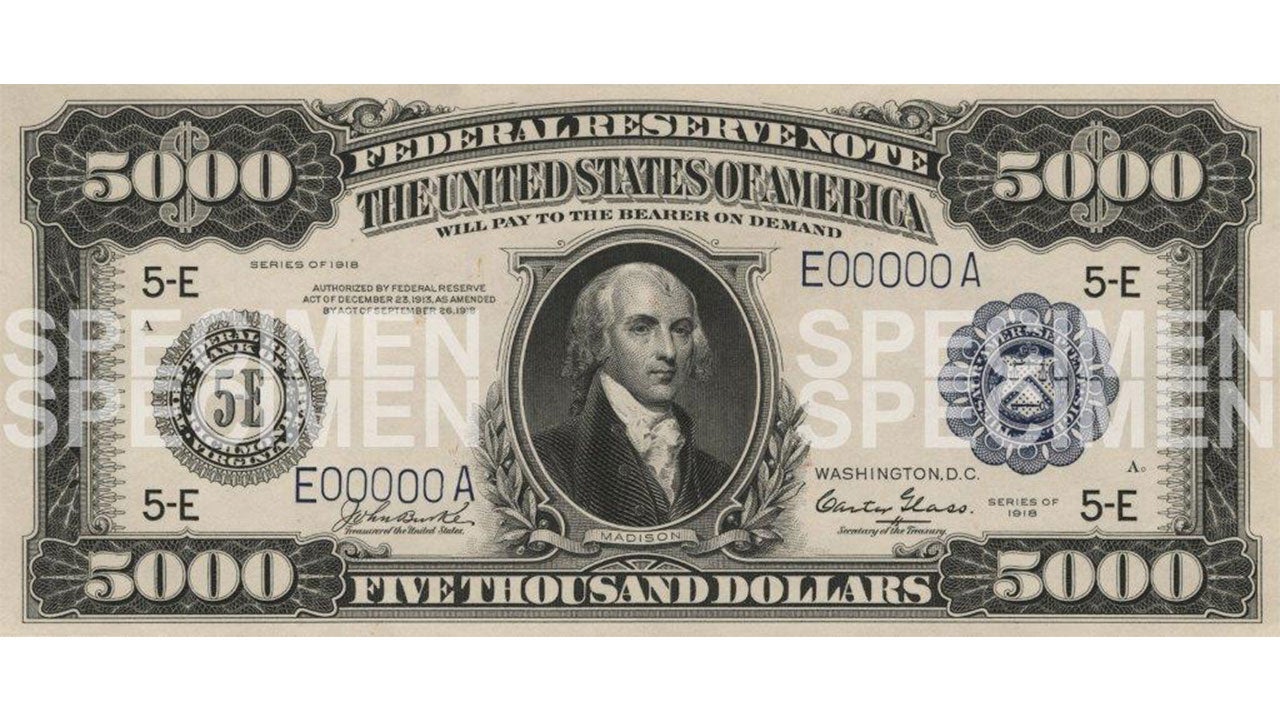
This 1918-printed $5,000 bill bears the likeness of Founding Father James Madison (often christened the “Father of the Constitution”), who went on to serve as the fourth President of the United States. The back of the bill shows then-General George Washington resigning his commission as commander-in-chief of the Continental Army on December 23, 1783.
$10,000 Bill
President Abraham Lincoln’s Secretary of Treasury is on all of the $10,000 bills. While only in office for three years, his face was on multiple $10,000 bill printings.
$10,000 Series 1918 Blue Seal
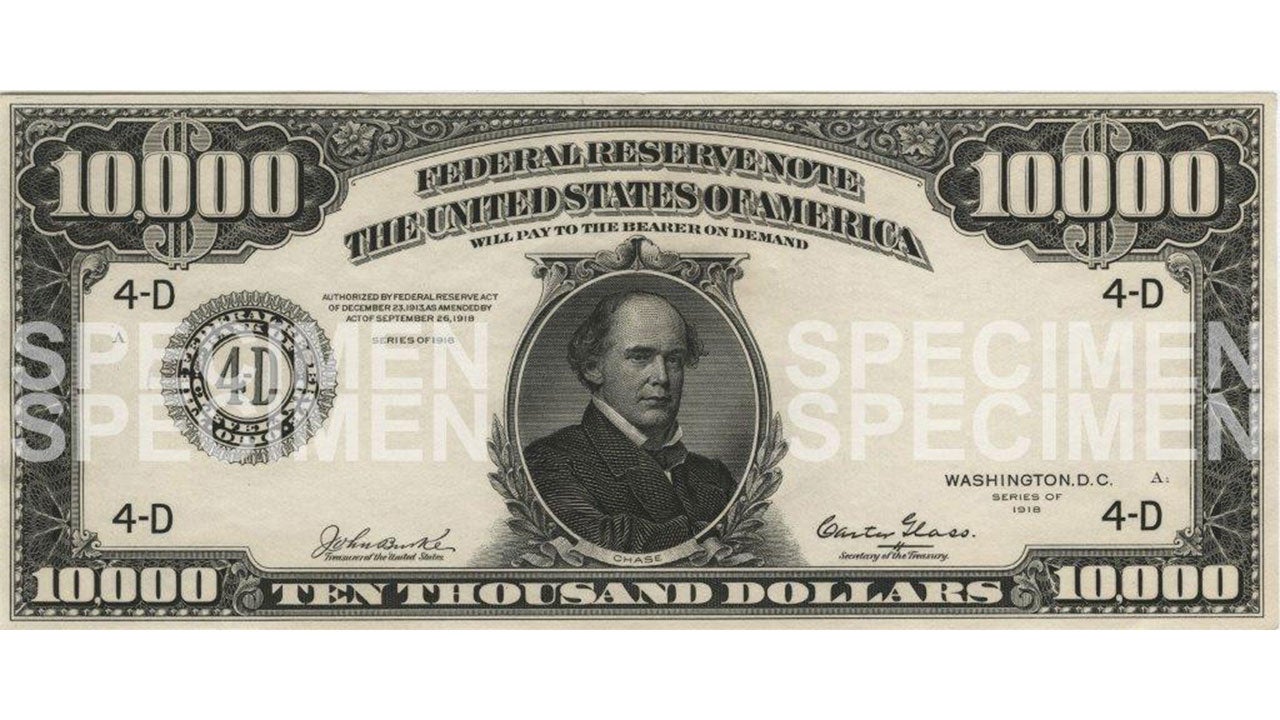
Just as this $10,000 bill, produced in 1918, is rare, the likeness on the front might be unfamiliar. It shows Salmon P. Chase, who served as President Lincoln’s Secretary of the Treasury from 1861 to 1864. The back of the bill shows the embarkation of the Pilgrims as they sailed for freedom in North America.
$10,000 Series 1928, 1934, 1934A & 1934B Green Seal
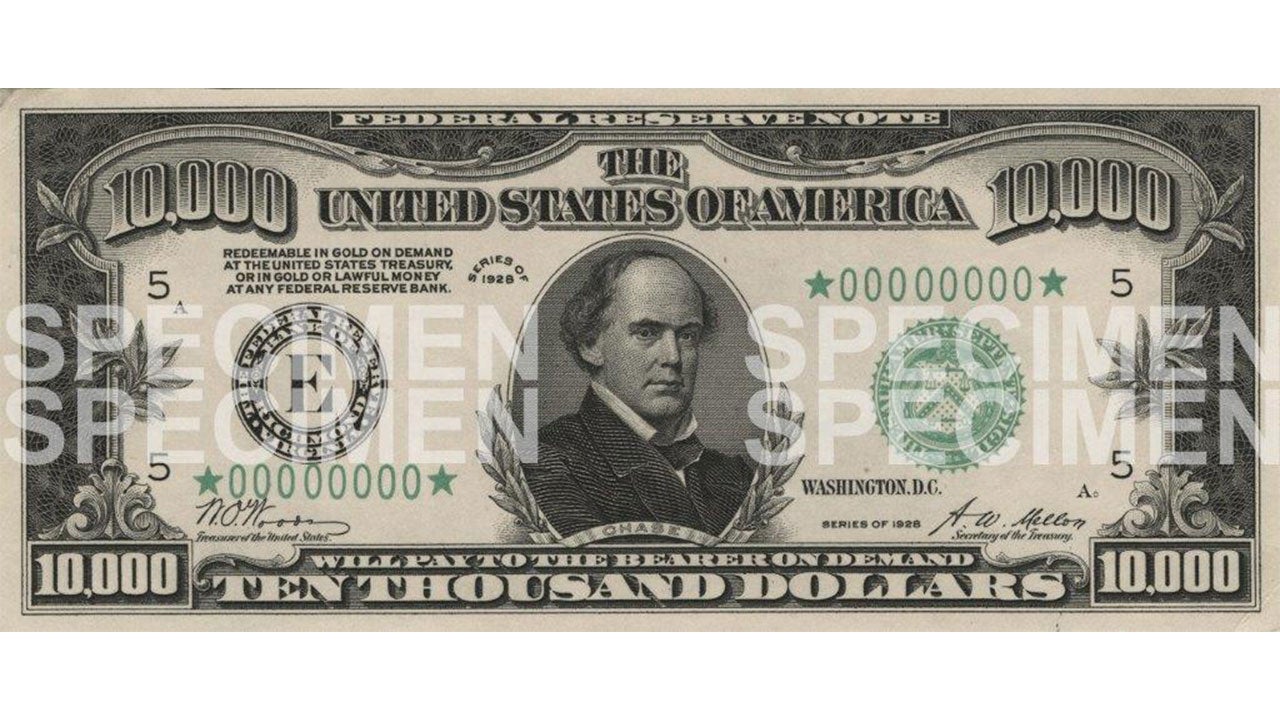
Like the previous $10,000 bill, these bills produced in 1928 and 1934 also bear the likeness of Salmon P. Chase on the front. However, the back of the bill simply says, “The United States of America — Ten Thousand Dollars — 10,000.”
$100,000 Bill
This bill didn’t even make it to the public. The $100,000 bill was for official government work within the Department of Treasury and the Federal Reserve Banks.
$100,000 Series 1934 Gold Certificate
media-credit id=attachment_223161 name=”Courtesy of US Treasury”]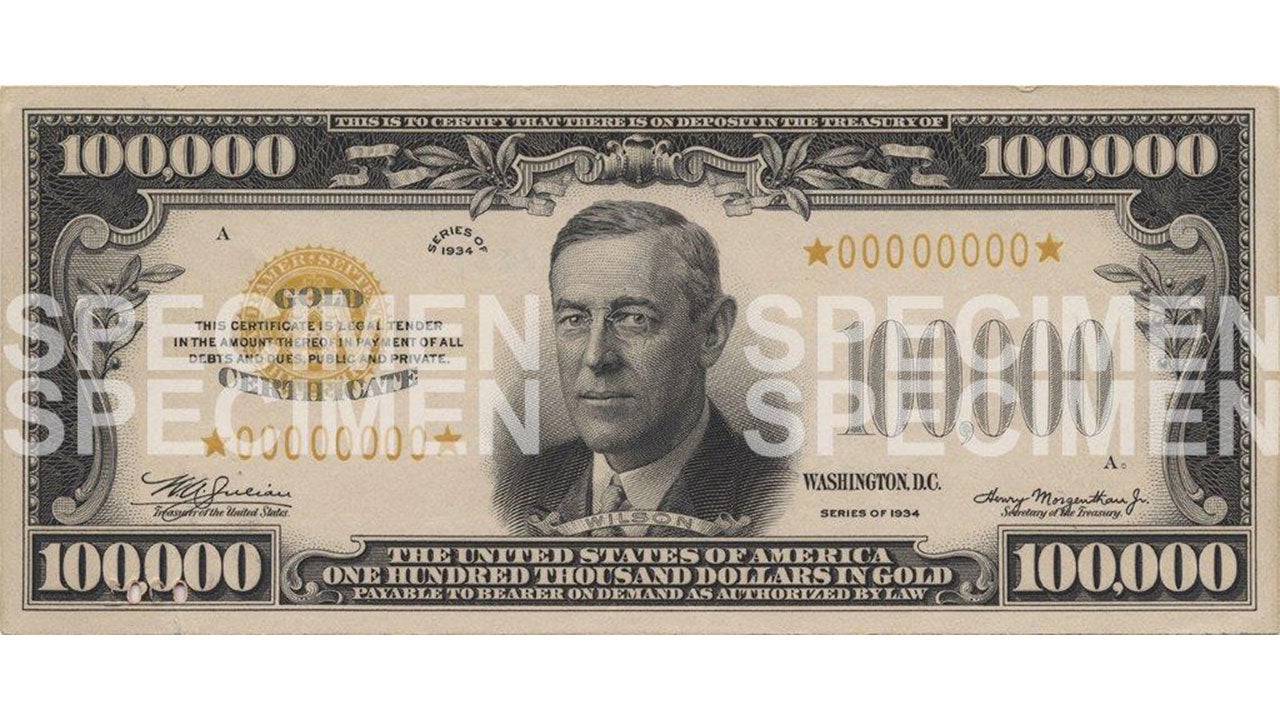
Though it might be nice to have a bill of this high denomination, the Bureau of Engraving & Printing, a division of the U.S. Department of the Treasury, states, “The $100,000 Gold Certificate was used only for official transactions between Federal Reserve Banks and was not circulated among the general public. This note cannot be legally held by currency note collectors.” The front has a portrait of Woodrow Wilson, the 28th President of the United States.
How to sell old currency
If you happen to be in possession of one of these rare big bills — or another type of currency that’s no longer in circulation — they could be worth much more than their face value. The collectible value is known as the premium, and that premium varies depending on the year of print, color, condition and serial number.
You’ll first want to evaluate the currency’s worth by noting the features that influence its premium. That information will be necessary to get an estimated value from a collector. You can also search by serial number on banknoteserialchecker.com to get an estimated value.
There are a few ways to connect with potential buyers of rare currency. One option is to auction your currency through a traditional auction house, such as Heritage Auctions, or through an online marketplace, such as eBay.
Another helpful resource is the American Numismatic Association (ANA). The ANA’s site includes information about exhibits and conventions where you can potentially sell your old currency as well as a directory feature that connects dealers and collectors.
Bottom line
The large denominations that once existed, ranging from $500 to a staggering $100,000, were taken out of general circulation due to minimal usage in 1969. While you might not see them often, they still exist, largely as collectibles.
If you happen to find such a relic, it’s worth taking the time to understand the rare bill’s value and consider its potential as an investment piece.
Related Articles



